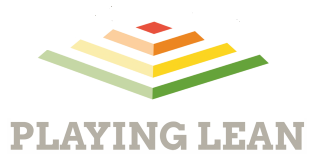The Lean Startup is all about building, measuring and learning. But what, exactly, are you supposed to measure? It’s all good to measure whether A is performing better than B, but what does it really tell you?
Lean Startup is all about building a viable business, so you need to measure the things that make your business viable. One of the most important questions to answer is this:
What does it cost my business to get a new customer?
To figure out the answer, you need to look beyond the individual data points and take a look at the whole system. It’s easy to figure out how much you spend on Facebook ads and how much traffic it brings you, but traffic in itself does not bring you revenue. You may know how many sales you get, but do you know how many of your customers are so satisfied that they will refer new customers to you?
To bring some clarity to the question, we have Pirate Metrics. The term was introduced by Dave McClure. There’s no evidence that pirates were especially gifted at startup metrics, but the abbreviation AARRR (which will be introduced shortly) could sound like something a pirate would say.

Acquisition
Let’s pretend that we’re in charge of Wimbu, one of the companies fighting for market dominance in Playing Lean 2. Where do our customers come from? From Facebook Ads, from organic Google searches or from the local travel fair?
We need to know how much we spend on each channel and how well they convert that money (or time writing blog posts for improved search ranking or effort that goes into organizing the fair presence) into traffic.
Activation
Now that we have traffic, how many of our users engage with our website in a meaningful way?
For Wimbu, this may be customers actually researching the available hosts in a specific city. It could also be signing for a freemium service, getting on the newsletter or something else that is right for your business.
If we hold acquisition and activation together, stats start to get interesting. We’ll know the cost of activation: What does it cost us in marketing money or hustling time to get one customer to have a meaningful interaction with our business?
Retention
For the three R’s, the order will vary according to your business model. For a freemium service, retention will come before revenue. You have to ensure that customers are returning and getting value from your business, or they will not give you their credit card details when the free period is up.
For Wimbu, retention is probably after revenue. We want our customers to come back again for their next after a nice stay with one of our hosts.
Retention is very important for most businesses and should be measured regularly.
Referral
Once you have activated or revenue customers you would like them to recommend your business to others. This might be pure word of mouth, which is a bit difficult to measure. You might want to consider putting in a referral program.
The referral program at Wimbu is one where both referrers and referrees get a discount for their next stay. We measure how many customers copy the links, and we measure how many new customers use the discount in the end.
So long as you keep the discounts you give lower than what you would pay for a customer through marketing, referrals are a great way to build your business.
Revenue
In the end, it’s all about getting those sales. Now that we have set up the whole pirate metrics funnel, there’s no need to guess. We know exactly how much we pay to get a new customer, our customer acquisition cost.
All we need to do to have a viable business is to make sure that the contribution from delivering our product or service to our customer is higher than our customer acquisition cost (Customer Life Time Value > Customer Acquisition Cost).
It’s like any good game: Easy to learn, but may take a lifetime to master.
Adapt
Pirate Metrics are a good starting point, but you will have to iterate. Change it up, drop something, be more precise or adapt it any way you see fit. As always, tools and methods provide good starting points, but will never be precisely right for your business.
Pirate Metrics is one of the experiment cards in the Social Media Scenario, which will teach you a valuable Lean Startup lesson while playing Playing Lean 2.
